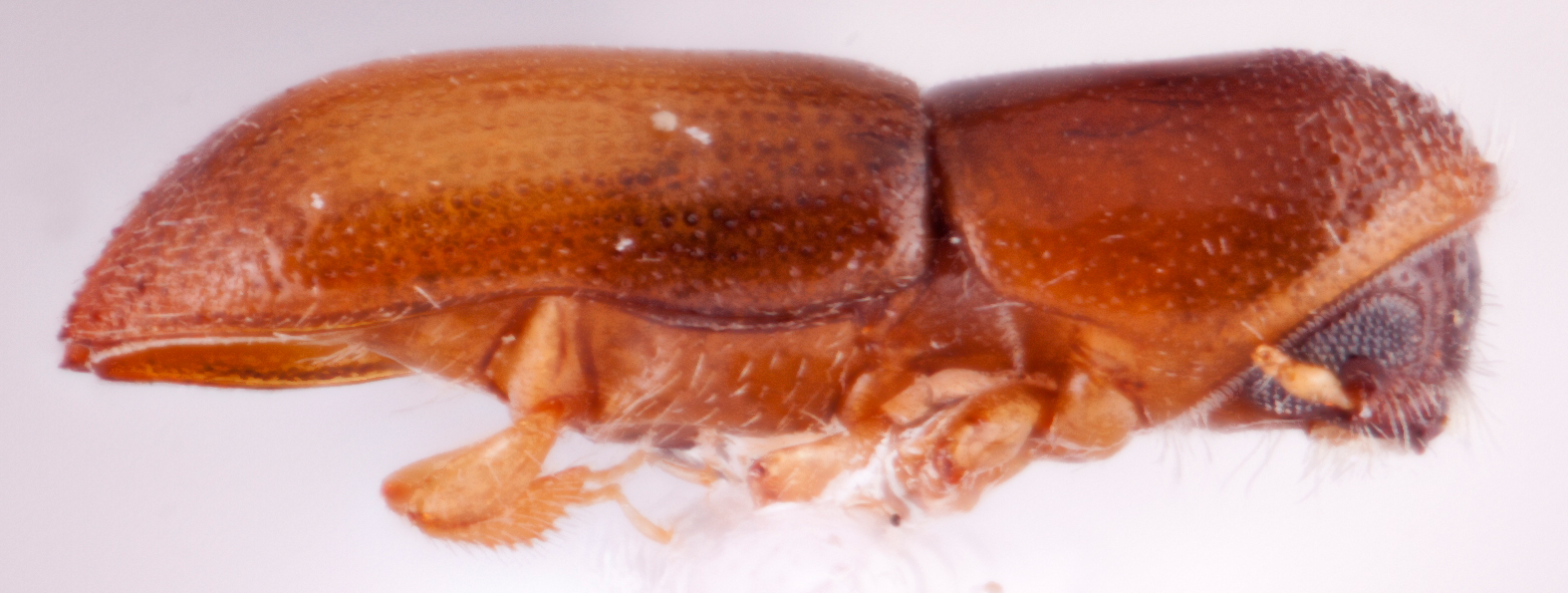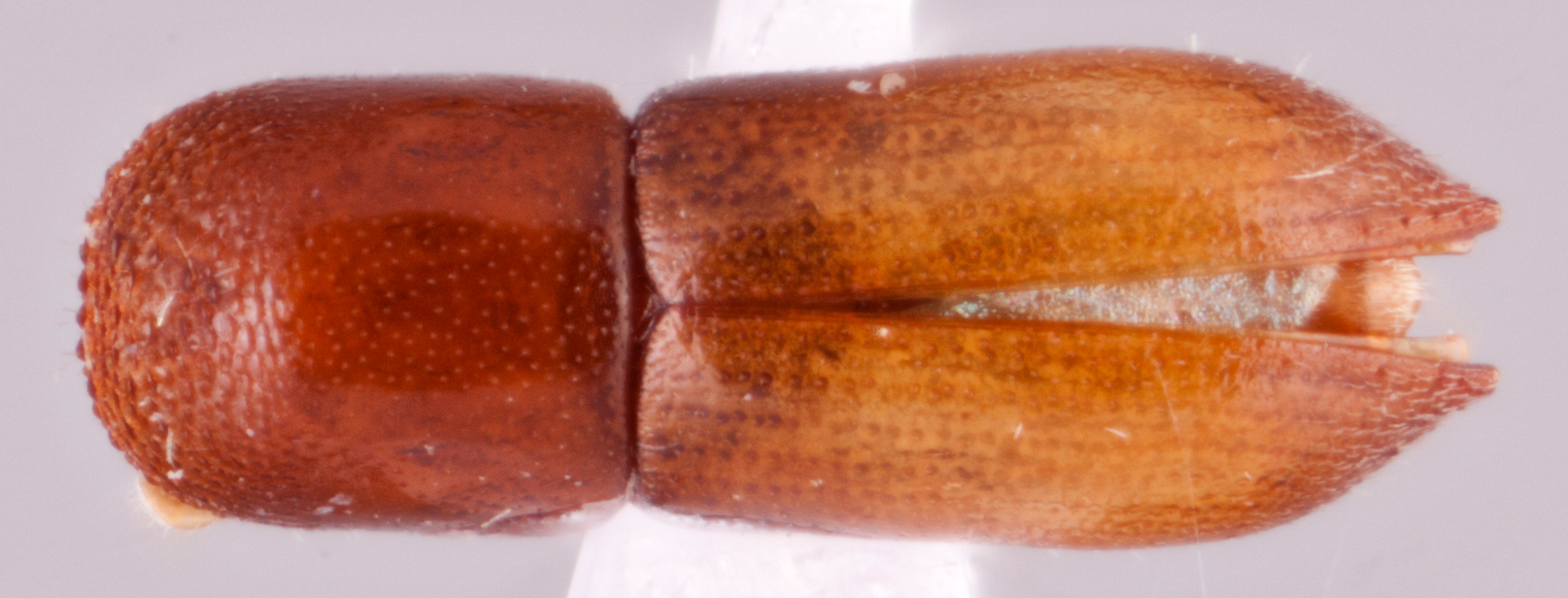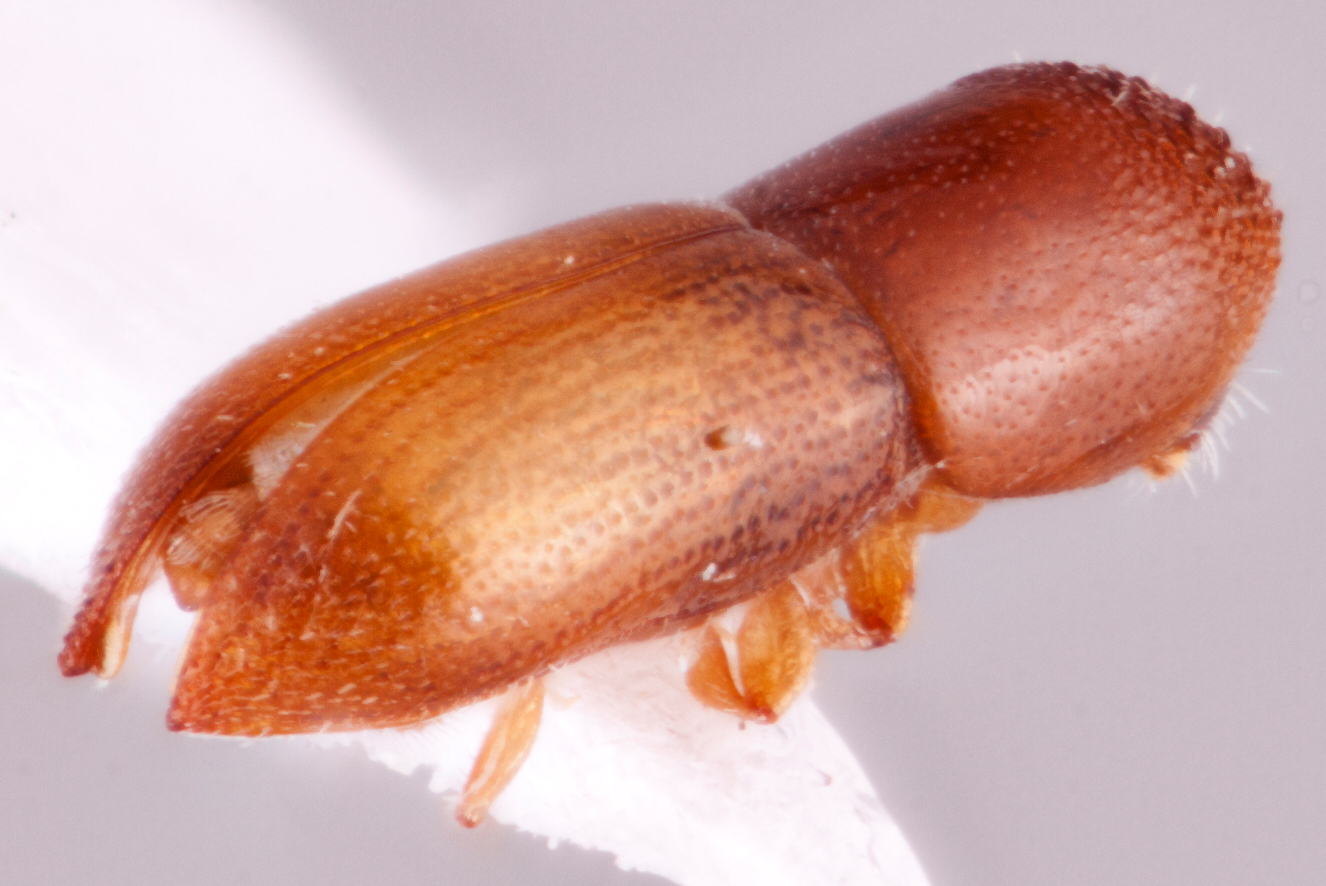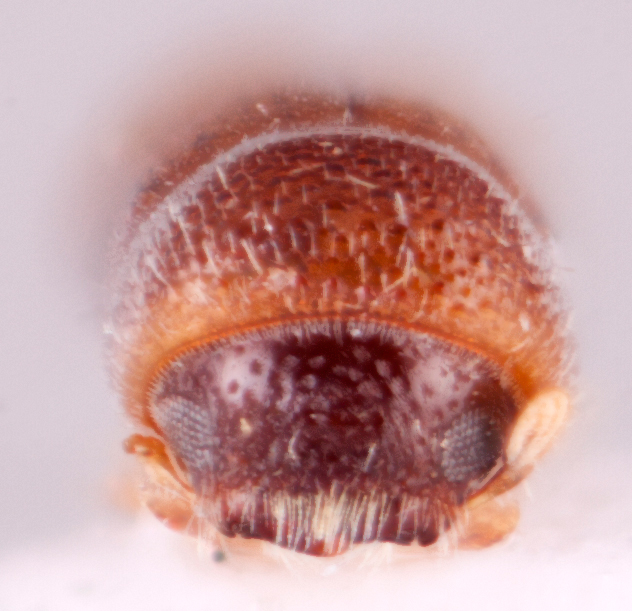Fraudatrix simplex
|
Fraudatrix simplex lateral; R.K. Osborn |
|
Fraudatrix simplex dorsal; R.K. Osborn |
|
Fraudatrix simplex declivity; R.K. Osborn |
|
Fraudatrix simplex frontal; R.K. Osborn |
Taxonomic history
Cryptoxyleborus simplex Browne, 1949: 902.
Webbia simplex (Browne): Wood and Bright, 1992: 833.
Cryptoxyleborus simplex Browne: Bright and Skidmore, 1997: 5, 176.
Fraudatrix simplex (Browne): Cognato et al. 2020a: 546.
Diagnosis
1.75−2.0 mm long (mean = 1.92 mm; n = 5); 3.08−3.33 times as long as wide. This species is distinguished by the anterioranterior:
the front or forward; opposite of posterior margin of the pronotumpronotum:
margin of the pronotumpronotum:
the dorsal surface of the thorax
subquadrate, short semi-recumbentsemi-recumbent:
pertaining to setae that are in between erect and recumbent, usually at a 45 degree angle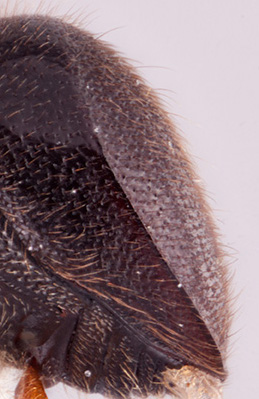 interstrial setaeseta:
interstrial setaeseta:
small hair-like or scale-like structure
and minute size.
May be confused with
Cryptoxyleborus confusus and C. percuneolus
Distribution
Brunei, Indonesia (Sumatra), East & West Malaysia, Thailand
Host plants
recorded from Dipterocarpus, Dryobalanops, Hopea, Shorea (Dipterocarpaceae) (Beaver and Hulcr 2008Beaver and Hulcr 2008:
Beaver RA, Hulcr J. 2008. A review of the ambrosia beetle genus Cryptoxyleborus Schedl (Coleoptera, Curculionidae: Scolytinae). The Coleopterists Bulletin 62: 133-153. https://doi.org/10.1649/1026.1)
Remarks
Browne (1961b) notes that brood size can exceed 50.
DNA data
specimens not available for sequencing

